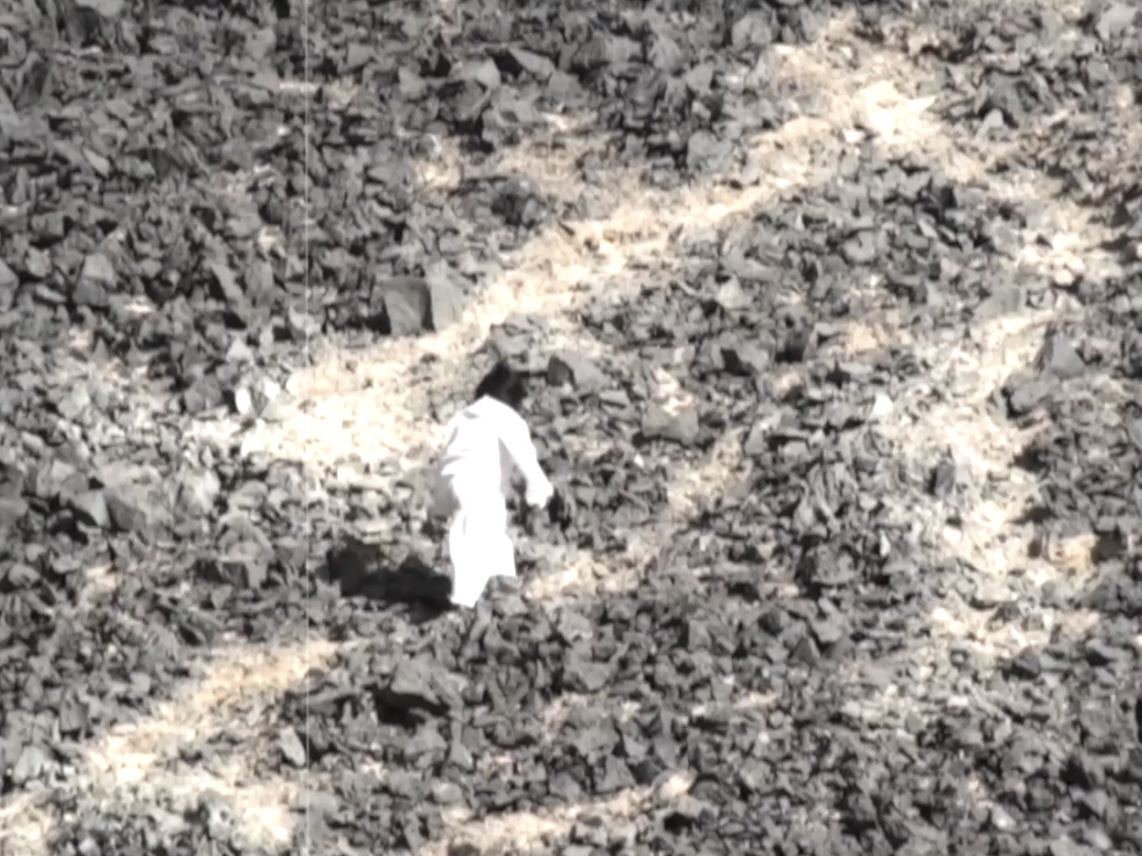Ruins I:
Distant Things Will No Longer be Revived
墟 I: 遥远的事物将不再复苏
墟 I: 遥远的事物将不再复苏
Performance-Video,10'00'',2024
Scenes are vehicles of memory, reproduced in the mind through images, sounds and perceptions. In "Mounds and Ruins: Elapse and Remembrance", Wu Hong writes that ruins symbolize both transience and an obsession with the flow of time - it is these two complementary dimensions that together define the materiality of ruins. Thus while the past elapses with time, it simultaneously expresses the symbiosis of grief and vitality.
The performance happened on a dead volcano in the desert. In a desolate and isolated environment, only the sound of steps rubbing against the volcanic earth, the wind and the breathing, gazing at puny life and massive death. It's a process, it's a memory revisited, it's a climbing practice. It's an attempt to try to fit into nature due to a sense of lack, and it's also a farewell.
Distant things will no longer be revived. Something that once existed, something that passed away, and something that still exists.
Welcome to the ruins.
The performance happened on a dead volcano in the desert. In a desolate and isolated environment, only the sound of steps rubbing against the volcanic earth, the wind and the breathing, gazing at puny life and massive death. It's a process, it's a memory revisited, it's a climbing practice. It's an attempt to try to fit into nature due to a sense of lack, and it's also a farewell.
Distant things will no longer be revived. Something that once existed, something that passed away, and something that still exists.
Welcome to the ruins.






2min preview version
Ruins II: This Place is a Shelter, This Place was a Shelter
墟 II: 这里曾经是个庇护所
墟 II: 这里曾经是个庇护所
Video/Mixed-media Installation, Size variable, 2024
Sometimes when we are faced with difficulties that cannot be resolved in the moment, we tend to find ourselves a shelter, and sleeping is an instinctive refuge behavior. It is the equivalent of sealing off all the pain that we need to face, essentially perhaps delaying our experience of pain. Psychologically speaking, sleeping too much is a form of avoidance of reality, and Spiritual Bypassing, coined by psychotherapist John Welwood, is 'the tendency to use spiritual thoughts and practices to avoid or refrain from confronting unresolved emotional issues, trauma, and unfinished developmental tasks'. But in fact, we need to go and face up to our strongest inner fears, and we still hesitate in this process.
24–09–2024